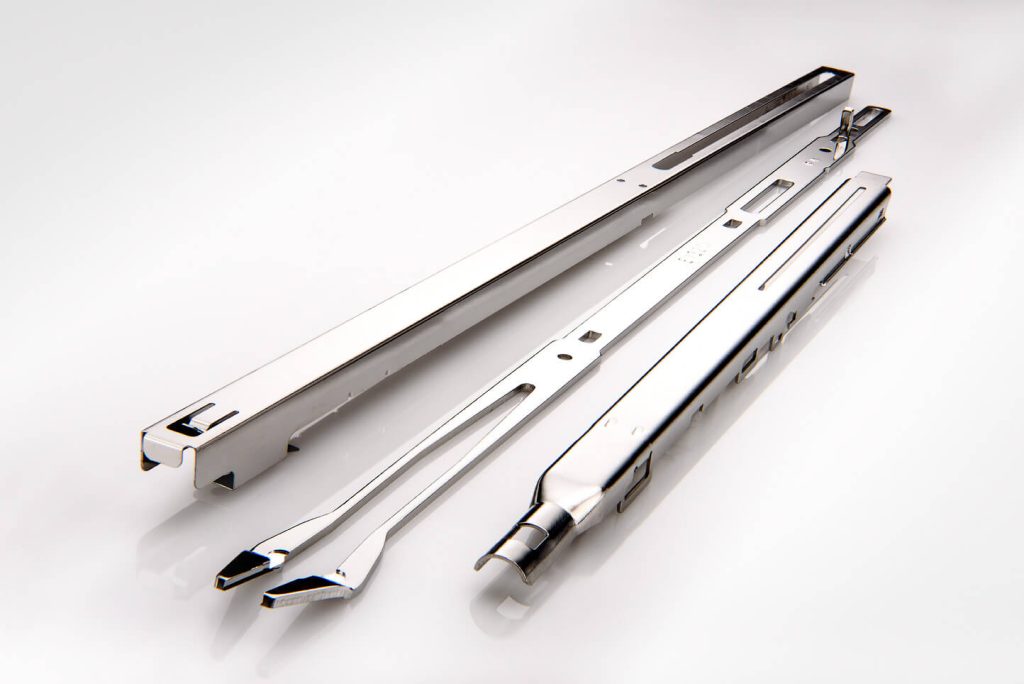Advancing Medical Device Finishing with Sustainable Surface Treatments

The Role of Sustainable Surface Finishing
For medical devices such as implants, surgical tools, and diagnostic instruments, the surface finish directly impacts performance, cleanliness, and durability. Traditional surface treatments often involve harsh chemicals and energy-intensive processes that are not eco-friendly. However, by adopting more sustainable methods, like electropolishing and citric acid passivation, manufacturers can reduce waste and energy consumption while still delivering the highest quality devices.
At NEE, we understand that sustainability is not just about reducing environmental harm but also about delivering superior, long-lasting results. Our electropolishing and citric acid passivation services provide high-quality, corrosion-resistant finishes that meet the medical industry’s strict standards for safety and performance, all while aligning with sustainable practices.
Electropolishing for Surface Enhancement
Electropolishing is a preferred finishing technique in the medical device industry because it smooths, deburrs, and cleans metal surfaces to a high degree of precision. Here’s how electropolishing supports both performance and sustainability:
- Improved Cleanliness and Sterilization: Electropolishing removes microscopic imperfections and contaminants from the surface of medical devices, making them easier to sterilize and reducing the risk of bacterial growth.
- Enhanced Corrosion Resistance: This process forms a uniform oxide layer that enhances the corrosion resistance of stainless steel and other alloys, ensuring medical devices can withstand harsh conditions, such as exposure to bodily fluids.
- Eco-Friendly Process: Compared to traditional finishing methods, electropolishing is more energy-efficient and produces fewer hazardous byproducts, making it a greener option for surface finishing.
- Superior Finish: Electropolishing delivers a smooth, shiny finish that enhances the aesthetic and functional properties of medical devices, reducing friction and wear over time.
Citric Acid Passivation: A Safe and Sustainable Alternative
Passivation is another crucial step in surface treatment, especially for stainless steel devices. It enhances corrosion resistance by removing free iron from the surface, which can cause rust. Traditionally, nitric acid has been used for passivation, but it comes with significant environmental and safety concerns due to its hazardous nature. Citric acid passivation offers a safer, more sustainable alternative.
- Eco-Friendly Chemistry: Citric acid, derived from natural sources like citrus fruits, is a biodegradable and non-toxic alternative to nitric acid. It significantly reduces the environmental impact of the passivation process.
- Enhanced Corrosion Resistance: Just like nitric acid passivation, citric acid passivation improves the corrosion resistance of stainless steel, providing the protection medical devices need without compromising on performance.
- Safer for Workers and the Environment: Citric acid is safer to handle, reducing risks to workers and lowering the need for specialized waste disposal procedures. This helps manufacturers comply with environmental regulations while maintaining safety standards.
Conclusion: The Future of Sustainable Surface Treatments
As the medical device industry continues to prioritize both performance and environmental responsibility, sustainable surface treatments like electropolishing and citric acid passivation are gaining traction. At New England Electropolishing, we are committed to offering advanced, eco-friendly solutions that meet the unique needs of medical device manufacturers. By embracing these innovative surface finishing techniques, you can deliver high-performance products that not only meet the toughest industry standards but also contribute to a greener future.
What is passivation?
What exactly is passivation, and why is it crucial for stainless steel surfaces? At New England Electropolishing, we delve into this important process to shed light on its significance and how it improves the potential of stainless steel.
Electropolishing Resources

What is Electropolishing?
Electropolishing is an electrochemical and reverse plating process that removes the outer layer of skin on a metal...

The Electropolishing Process
The electropolishing process is initiated by immersing a metal part into a temperature-controlled bath of electrolyte...

Benefits of Electropolishing
Curious about the benefits of putting your parts through the electropolishing process? Read along below where we...

How Much Material Does Electropolishing Remove?
Electropolishing, when done properly is a highly controllable process which removes as little as...

How Much Will Electropolishing Improve the Surface Finish of My Part?
Ra and RMS are both representations of surface roughness. Ra is calculated as the roughness average of a surface’s...

Electropolishing Frequently Asked Questions
Learn the difference between electropolishing and electroplating as well as how the electropolishing process works...

What is ASTM B912?
ASTM B912 is an industry standard for the passivation of stainless steel alloys through electropolishing...

What is ASTM A967?
ASTM A967 is an industry standard specification for the chemical passivation treatments for stainless...

What is ISO 13485?
ISO 13485 is a standard that applies specifically to medical devices. ISO 13485 is designed to be...
